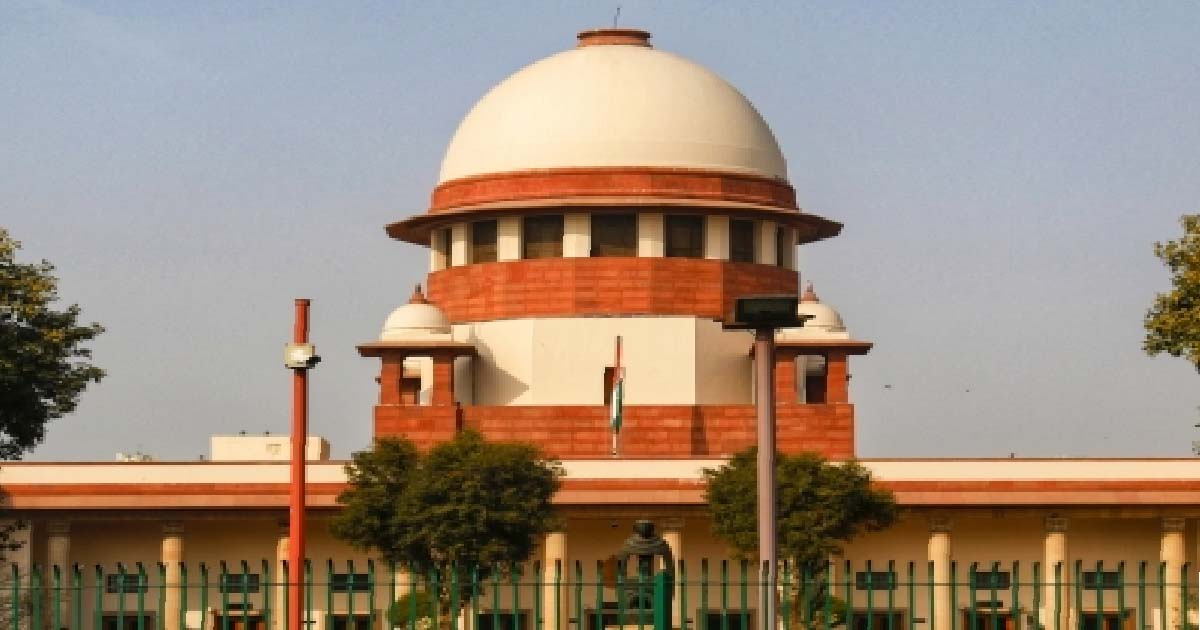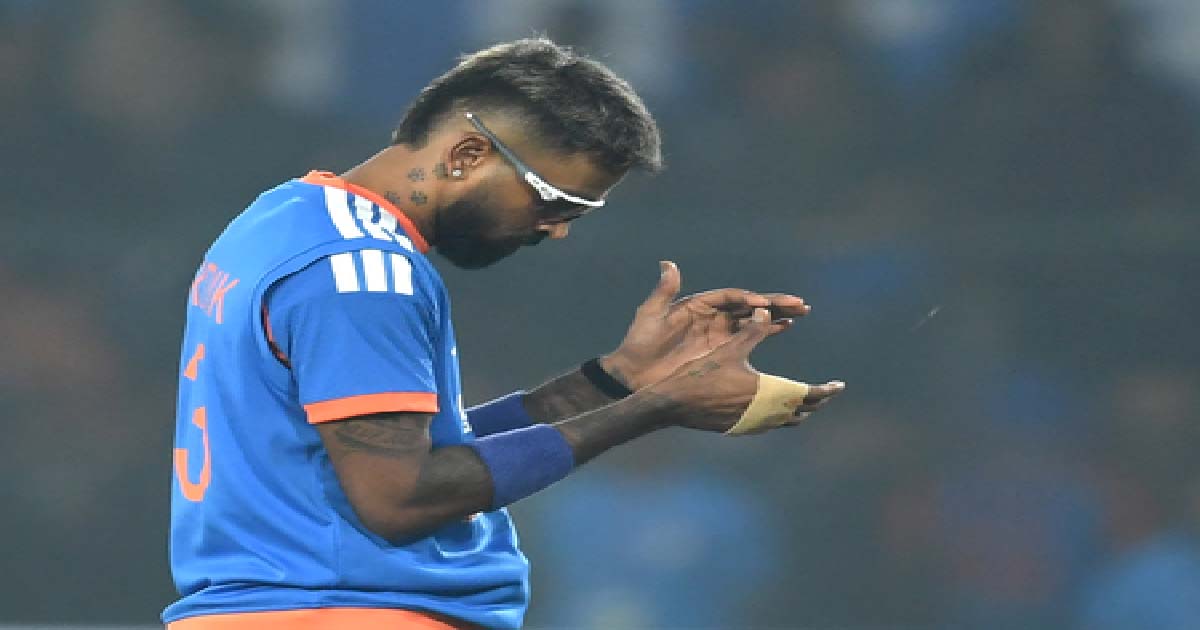National News
‘Aimed to gain publicity’: SC dismisses PIL seeking more security for tourists in hilly and remote areas post-Pahalgam

New Delhi, May 5: The Supreme Court on Monday dismissed a Public Interest Litigation (PIL) seeking enhanced safety and security measures for tourists in hilly areas and remote destinations, filed in the aftermath of the deadly April 22 terror attack in Jammu & Kashmir’s Pahalgam, which claimed lives of 26 civilians.
A bench of Justices Surya Kant and N.K. Singh rapped advocate Vishal Tiwari, appearing in person, for filing “purported PILs” aimed at gaining publicity.
“Mr. Tiwari, last time also, we advised you. What is your purpose and motive? Who is inciting you to file this kind of PIL? You don’t understand any sensitivity? You don’t realise your responsibility? I think you are inviting some order with exemplary cost,” the bench said.
The PIL litigant submitted that he was not seeking any direction against the government, and the plea was limited to raising safety concerns of tourists in hilly areas and remote destinations.
However, the Justice Surya Kant-led Bench remained unconvinced and dismissed the petition, saying that advocate Tiwari was engaging in “one or the other purported PILs which are primarily aimed to gain publicity with no intent to serve public cause”.
The PIL said that there exists a lack of safety programmes and guidelines for tourists and the general public on how to save themselves when there is a terrorist attack, how to get immediate help, and how to hide themselves when attacked.
It added that tourists in Pahalgam were an easy target for the terrorists as those innocent people were unarmed and without any security.
“It is for the first time that the tourists have been targeted and in such large numbers they have been killed and injured. Now it has raised the question of safety and security of the people of the country who visit as tourists, mostly in hilly areas and valleys like Jammu and Kashmir,” the plea said.
“Recent terrorist attacks have raised questions of the security of tourists visiting such remote places. In urban areas, it is difficult to attack as there is regular movement of police forces, but tourist destinations are geographically different, where people can be targeted easily,” it added.
The PIL stressed that the Centre and State governments will have to take steps to deploy adequate security for the tourists who visit remote hilly areas and valleys, especially during the summer season. “The VIPs always remain under protection throughout the clock in our country. When they pass, roads are blocked for citizens. A lot of security personnel are deployed in their security, but the common people always suffer,” it further said.
The top court had recently declined to entertain a plea seeking the formation of a probe panel headed by a retired apex court judge to investigate the deadly Pahalgam attack.
Slamming the PIL litigant, the Justice Surya Kant-led Bench said that it would not entertain any plea which could demoralise the country’s armed forces.
“Be responsible before filing such a PIL. Since when have retired High Court or Supreme Court judges become experts in investigation? Since when have we (judges) gained the expertise of investigation? We only decide disputes. Please do not ask for these prayers (for investigation under supervision of a retired SC judge),” the apex court said.
“This is the crucial hour when each and every citizen of the country has joined hands to fight terrorism. Don’t make any prayers which could demoralise our forces. It is not acceptable to us! Look at the sensitivity of the issue,” it added.
National News
Mindset was about coming back ‘stronger, bigger and better’: Hardik

New Delhi, Dec 10: After being named Player of the Match in the first T20I against South Africa on Tuesday, all-rounder Hardik Pandya set his sights on larger goals. Fully embracing his comeback, he aims to cherish every moment ahead.
Any doubts over his fitness were settled when he demonstrated his form in his first match since the Asia Cup 2025 injury. He delivered an impressive all-round performance, taking 1-16 with the ball and scoring an unbeaten 59 runs, aiding India’s 101-run victory over South Africa in Cuttack and securing a 1-0 lead in the series.
“You should be a rockstar, come perform for 10 minutes, and the crowd goes berserk. That has been the biggest motivation for me. Life has always thrown a lot of lemons at me, and I always thought that I would make lemonade. I’ve always believed that if I don’t believe in myself, how will others believe me? My mindset was really about coming back stronger, bigger and better,” Hardik said in a video shared by the BCCI.
“Every time that I walk in, I feel like the crowd has been waiting for this moment. They’ve come to watch me bat. Because I have stood strong, I have done a lot of things with grace. That has helped me become even more confident, back myself, and really trust my skill set. I really believe in myself as a player. Injuries test you mentally as well, and at the same time, it puts you in a lot of doubt,” he added.
Hardik also credited his girlfriend, Mahieka Sharma, for bringing positivity into his life before confidently stating that his goal is now to pursue bigger ambitions and excel in every opportunity he gets.
“A lot of credit goes to my loved ones. Special mention to my partner as well. She’s been nothing but the best to me since she entered my life. A lot of great things have happened since she’s arrived,” he said.
“I’ve been a very honest and very real person in life as well, which has helped me a lot. I don’t really sugarcoat a lot of things in my life. It’s never about the other person, never about how others think or how others perceive. It is always about how I feel inside. Now it’s a time where Hardik Pandya just wants to play the sport and enjoy every second on the ground. And yes, bigger and better will be the motto in my life,” he added.
Crime
Palghar Crime: 2 Arrested For Attempted Murder In Daylight Robbery At Vasai Jewellery Shop

Palghar: In a swift and coordinated operation, the Crime Branch Unit 4 of the Mira-Bhayandar, Vasai-Virar Police Commissionerate arrested two accused who brutally attacked a jeweller during an attempted daylight robbery in Vasai East.
The incident occurred on December 9, 2025, at around 11:57 a.m. at Ambika Jewellers, located near Shalimar Hotel in Waliv, Vasai East. According to the police, the complainant’s brother, Kalusingh Kharvat, was attending the shop when an unidentified man and woman entered the store along with a young child. They asked to see a gold ring and also requested water for the child.
When Kalusingh stepped into the inner room to bring water, the male accused followed him inside and allegedly attacked him with a knife. The victim sustained multiple stab wounds to his abdomen, hands, chin, right cheek, and forearm. The attacker reportedly attempted to kill him before fleeing the scene. A case was registered at Waliv Police Station under BNS Section 109 and 3(5) for attempted murder and related offences.
Acting on instructions from senior officers, Crime Branch Unit 4 immediately visited the crime scene, analysed CCTV footage, and developed actionable intelligence. Based on technical surveillance and confidential information, the team tracked down and detained the suspects from the Nashik Road area.
The arrested individuals have been identified as Sohel Sharafat Khan, 23, and Firdos Bano Sohel Khan, both residents of Tehroli, District Jhansi, Uttar Pradesh. The duo were found to be actively involved in the crime and were handed over to Waliv Police Station for further investigation.
Meanwhile, the victim is undergoing treatment and is reported to be in stable condition.
Business
Mumbai: RTO Files Criminal Cases Against Uber, Ola, Rapido After Fatal Highway Crash In Mulund

Mumbai: Following the death of a woman passenger in a collision involving a speeding mixer truck and an illegally operated Uber-linked Activa scooter on the Eastern Express Highway, the Regional Transport Office (RTO) has taken serious note of the incident and initiated criminal action directly against the directors of Uber, Ola and Rapido.
Five FIRs have been registered across four police stations, Navghar, Nehru Nagar, Pant Nagar and Amboli. An official of the state transport department said, “We will ensure strict action against all those operating bike taxis in violation of RTO norms, including suspension of licences. No violations will be tolerated.”
According to the FIR filed on December 1 by the Navghar police, the accident occurred at 11am on November 29 beneath the Airoli Flyover on the Eastern Express Highway, Mulund (East). The accused driver, Jawahir Yadav, 40, was allegedly driving a mixer truck at high speed and in a rash and negligent manner when he rammed into an Activa scooter that had been registered on the Uber platform without any transport permit.
The impact left the scooter rider, Ganesh Madhav, seriously injured, while the pillion rider, Shubhangi Magre, 49, died. The Navghar police initially booked the truck driver for causing death by negligence. Subsequently, based on a complaint filed by Motor Vehicle Inspector Ravindra Gawde of the Mumbai East RTO (Wadala), the Navghar police registered a case against the directors of Uber India Systems Pvt Ltd.
Investigations revealed that rider Madhav had registered an Activa scooter belonging to his maternal uncle with Uber without mandatory permission from the transport department. He then reportedly ferried passengers using another scooter (MH 03 EM 4233), also without authorisation. The police have invoked relevant sections of the Bharatiya Nyaya Sanhita, the Motor Vehicles Act, and the Maharashtra Bike Taxi Rules, 2025, against Uber India directors.
The FIR states that Uber violated the conditions of its temporary permit for app-based transport services by allowing unauthorised private scooters to be registered on its platform. Following the Navghar case, RTO officials began booking bike taxi rides through various apps to initiate further action. On December 3, the Nehru Nagar police registered a case against the directors of Roppen Transportation Pvt Ltd (Rapido), stating that the company was illegally operating petrol-engine bike taxis in Mumbai without any licence from the Maharashtra government or Regional Transport Authority.
The Nehru Nagar police filed a second FIR against directors of both Rapido and Uber on December 4. On the same day, the Pant Nagar police also registered a case against Rapido’s directors for similar violations. On December 5, after booking four rides through the Rapido app and one through the Ola app, RTO officials filed another case at the Amboli police station, alleging that both companies were facilitating illegal passenger transport for profit. The police officials said investigations in all cases are underway.
-

 Crime3 years ago
Crime3 years agoClass 10 student jumps to death in Jaipur
-

 Maharashtra1 year ago
Maharashtra1 year agoMumbai Local Train Update: Central Railway’s New Timetable Comes Into Effect; Check Full List Of Revised Timings & Stations
-

 Maharashtra1 year ago
Maharashtra1 year agoMumbai To Go Toll-Free Tonight! Maharashtra Govt Announces Complete Toll Waiver For Light Motor Vehicles At All 5 Entry Points Of City
-

 Maharashtra1 year ago
Maharashtra1 year agoFalse photo of Imtiaz Jaleel’s rally, exposing the fooling conspiracy
-

 National News1 year ago
National News1 year agoMinistry of Railways rolls out Special Drive 4.0 with focus on digitisation, cleanliness, inclusiveness and grievance redressal
-

 Maharashtra1 year ago
Maharashtra1 year agoMaharashtra Elections 2024: Mumbai Metro & BEST Services Extended Till Midnight On Voting Day
-

 National News1 year ago
National News1 year agoJ&K: 4 Jawans Killed, 28 Injured After Bus Carrying BSF Personnel For Poll Duty Falls Into Gorge In Budgam; Terrifying Visuals Surface
-

 Crime1 year ago
Crime1 year agoBaba Siddique Murder: Mumbai Police Unable To Get Lawrence Bishnoi Custody Due To Home Ministry Order, Says Report












